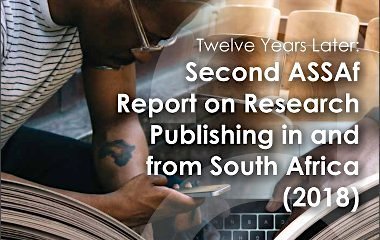SADC meeting agrees on need for STEM in industrialisation
Higher education curricula in the Southern African Development Community (SADC) must pivot on science, technology and innovation if industrialisation of the region is to be achieved, as envisaged in t
11 Mart 2019 - 06:58
Higher education curricula in the Southern African Development Community (SADC) must pivot on science, technology and innovation if industrialisation of the region is to be achieved, as envisaged in the bloc’s Industrialisation Strategy and Roadmap 2063.
This emerged from the first SADC regional conference of vice-chancellors and deans of education, science and technology; policy-makers; ministers of education and training, science, technology and innovation; and development partners that took place in the resort town of Victoria Falls in Zimbabwe last month.
Speaking at the meeting attended by about 150 delegates, guest of honour, Zimbabwe’s Minister of Higher and Tertiary Education, Science and Technology Development, Professor Amon Murwira, said modern education systems and universities must be designed to improve the quality of life through producing superior goods and services.
“In order to produce goods and services, the universities in the 21st century must shift focus from only analysis to analysis and creation. We should design our systems so that they produce the goods and services,” Murwira said.
Redesign
“We can’t move forward using a wrong or misplaced design. Our universities have largely focused on teaching, research and community service but this was not meant to produce goods and services; hence, education has not resulted in any direct development of industries.”
Murwira said no matter how many STEM subjects – science, technology, engineering and mathematics – universities teach, industrialisation would not happen with the wrong education system design.
“Therefore, we need to change the design of the education system to make STEM effective for industrialisation. STEM that is practised and operates in the right environment will always cause industrialisation,” he said.
Post-independence education systems in the SADC and in many parts of Africa have, to a large extent, not evolved away from their colonial origins. In Zimbabwe, for instance, the higher education environment is characterised by high literacy levels of around 94%, low skills levels of 38%, an 88% deficit in STEM-related fields, a disconnect between industry and universities, and low university rankings. The current environment has resulted from design problems; a mismatch between the design and the desired output, he said.
Murwira said Zimbabwe recently reconfigured its education system to put more emphasis on science and technology development.
Chairperson of the SADC ministers grouping, and Namibia’s Education Minister, Itah Kandjii-Murangi, said the SADC can only industrialise with quality higher education that emphasises STEM education at school, vocational and higher education levels, as stipulated in the SADC strategy which is anchored on the three pillars of industrialisation, competitiveness and regional integration from 2015 to 2063.
STEM at the core
“STEM must form the core of our school curriculum and should be integrated into all other disciplines such as languages and the arts to produce a coherent educational platform that promotes interdisciplinary and applied approaches,” Kandjii-Murangi said.
She added that the knowledge of STEM must be deepened and effectively harnessed to accelerate industrialisation and sustainable development of SADC member states.
“To meet the fourth industrial revolution in the SADC, the human resource of the future must be conversant with emerging technologies in a number of fields such as robotics, artificial intelligence, nanotechnology, quantum computing, big data, biotechnology, fifth generation wireless technology and 3D printing,” she said.
Internationalisation
Kandjii-Murangi also called for internationalisation of higher education in the region through the encouragement of student and staff mobility and the collaboration of universities. Intra- and inter-university collaboration is seen as one of the key outputs for achieving the regional agenda through high-level skills development.
UNESCO Regional Director for Southern Africa Professor Hubert Gijzen said for SADC nations to achieve regional and national goals and targets, it was imperative to mobilise science, technology and innovation as the foundation for innovations and new technologies.
The conference resolved to review STEM curricula in order to align programmes towards achieving social development goals and emerging development agendas. It also resolved to revitalise higher education and training in STEM to respond to the region’s agenda for industrialisation and modernisation while focusing on gender transformative approaches to STEM education, youth employment, entrepreneurship and diversity.
The conference resolved to:
• Establish a biennial high-level forum for vice-chancellors, deans and captains of industry and commerce, and other stakeholders to take stock of progress made towards achieving the regional agenda through high-level skills development;
• Establish a region-wide steering committee to monitor and evaluate the progress and achievement of education that translates knowledge into goods and services;
• Develop a framework and action plan to ensure that higher education institutions review their programme qualification mix to ensure that institutions respond to social, economic, national and regional imperatives to make sure that STEM graduates can create employment and generate wealth, in the process enhancing the industrialisation of the entire SADC region;
• Review STEM curricula to align programmes towards achievement of the Sustainable Development Goals and emerging development agendas for revitalising higher education and training in science, engineering and technology, to respond to the region’s agenda for industrialisation and modernisation with a focus on gender transformative approaches to STEM education, innovations, youth employment, entrepreneurship, diversity and inclusion;
• Identify key areas for SADC-wide intra-inter-university collaboration for high-quality joint training and priority research initiatives, including establishing and strengthening staff and student exchange and mobility programmes; and
• Harmonise entry qualifications, minimum bodies of knowledge and credit transfer systems; and expedite alignment of national qualification frameworks to the SADC region framework, among others.







YORUMLAR